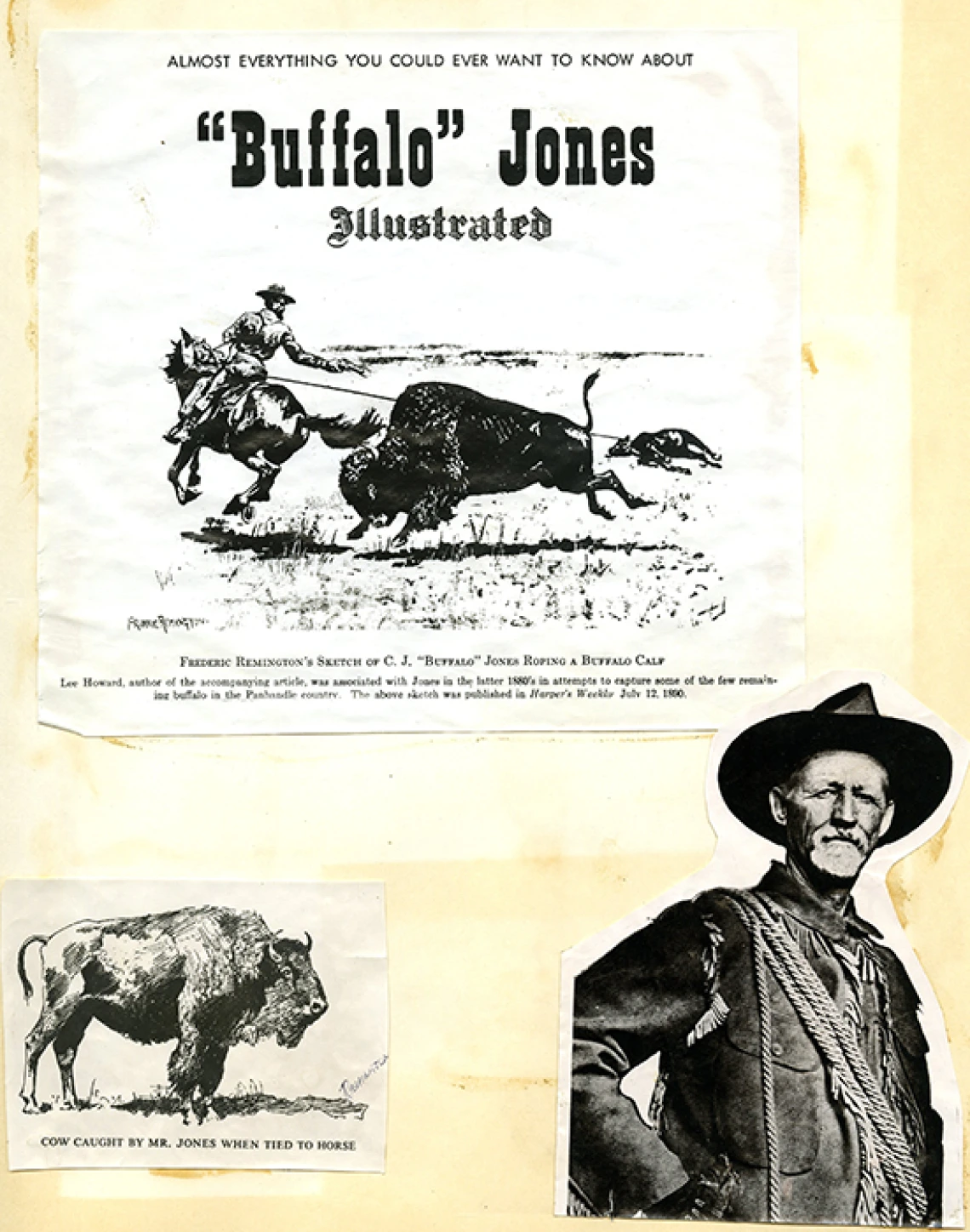Charles Jesse Jones collection

Images and information on C.J. Buffalo Jones
Collection area: Arizona and Southwest
Collection dates: 1872-1990 bulk (bulk 1872-1936)
The collection is contained in one manuscript box and one scrapbook.
The correspondence is mostly between family members from 1907 to 1928. The bulk of the correspondence is between C. J. Jones and his youngest daughter Olive Jones Whitmer. There is also correspondence between Olive Jones Whitmer and other family members as well as business partners of her father. There is some correspondence between C. J. Jones and business partners and others interested in his business ventures including, James Wilson, United States Secretary of Agriculture; John A. Dix, Governor of New York; and Charles Goodnight, livestock breeder.
The publications are mostly articles regarding C. J. Jones (often photocopies); broadsides and other advertising publications, some original copies; an old Yellowstone National Park brochure; an original copy of the American Bison Society Report, 1924-1926, and a dinner program for Canadian Camp, New York, 1911.
The financial and biographical records in this collection are limited to three stock certificates and a photocopy of Jones' death certificate. The scrapbook is comprised of photographic images from magazines and photocopies of articles regarding C. J. Jones' various activities.
The collection is an interesting glimpse into the personal life of C. J. Jones and his relationship with family members, and to a lesser degree his business and professional interactions.
Charles Jesse Jones, known as "Buffalo" Jones, born January 31, 1844 in Tazewell County, Illinois to Noah and Jane Jones, lead the life of the quintessential pioneer cowboy. From his early childhood in Illinois where his father once hired Attorney Abraham Lincoln, to his experience as a buffalo hunter on the Great Plains in the 1870's, and later his friendship and rivalry with Theodore Roosevelt, Jones' life story serves as an allegory for the experience of American expansionism on the western frontier. Charles J. Jones' unique role in this westward movement was his effort to save the American Bison from extinction, and subsequently to hybridize them with domestic cattle.
His early experience as a buffalo hunter lead Jones to respect the rugged, adaptive qualities of bison, simultaneously lamenting their demise and his own role in their slaughter. In the process of trying to save the bison from extinction Jones became famous for the live capture of wild animals. His reputation lead him on a series of adventures including the live capture African big game, which was filmed with both still and moving photography; the live capture of the arctic musk ox, and the capture and "spanking" of bears in Yellowstone National Park after being appointed Park Warden by President Theodore Roosevelt. The writer Zane Grey, who became friends with Jones and had accompanied him on mountain lion captures, acknowledged that Jones was the inspiration for many of his fictional characters, as well as the subject of two non fiction books, The Last of the Plainsmen, 1911 and Roping Lions in the Grand Canyon, 1924.
Charles J. Jones married Martha J. Walton (a descendent of naturalist, Isaac Walton) on January 20, 1869. They had four children, two boys died in childhood. Throughout his life Jones maintained close correspondence with his daughters, Jessie and Olive. Suffering from a chronic illness contracted while in Africa, Jones died at his daughter Olive's house in Topeka, Kansas on March 18, 1919. He is buried alongside his wife Martha and their two sons in the Valley View Cemetery, Garden City, Kansas.
A collection guide explains what's in a collection. New to using our collections? Learn how to use a collection guide.
Collection guideAccess this collection
Visit us in person to access materials from this collection. Our materials are one-of-a-kind and require special care, so they can’t be checked out or taken home.
How to cite
Learn how to cite and use materials from Special Collections in your research.
